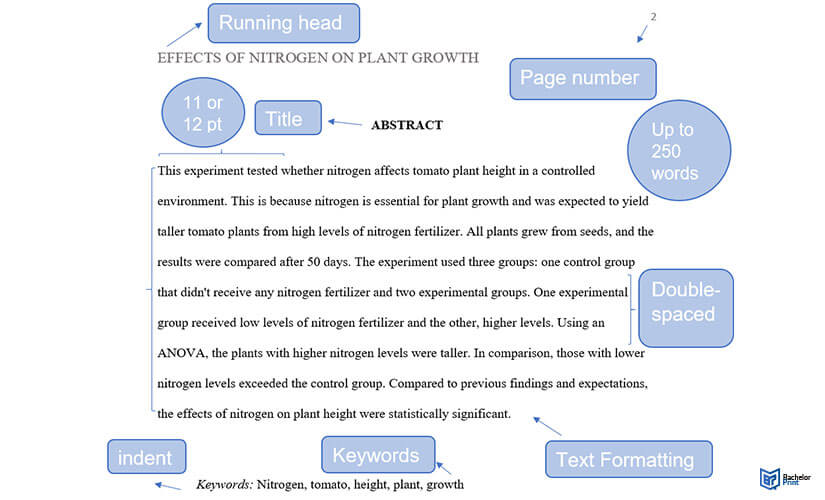
In the field of academic writing, the abstract is a vital part of ensuring that your possibly-groundbreaking research is able to reach the right audience once it has been published. As one might expect, the American Psychological Association has some pretty strict APA style guidelines that can make the process of writing an abstract feel a little intimidating or overwhelming. This article has the aim to help you make sure your own APA abstract is as good as it can be.
Definition: APA abstract
In the most reductive sense, the abstract is a high-level summary of your research paper that is prepended to the main body content.
A well-written APA abstract will offer prospective readers a quick, precise overview of complex scientific research, allowing them to decide quickly whether committing to reading the whole paper is likely to benefit them.
Academic journals use indexing software to search the abstracts of published articles for potentially relevant research to include in future volumes.
Thus, a properly-structured APA abstract is an integral part of ensuring that your insights are able to disseminate to the proper audience.
Formatting an APA abstract
As with other parts of their style guide, the APA abstract is subject to some fairly rigorous guidelines around page and text formatting.
The bullet points below run through the five most important considerations:

| Running Head | This is a brief (no more than 50 words) summary title that gives readers an immediate picture of your paper’s subject matter. It should be written in all caps with no abbreviations, and aligned to the left in the top margin of the abstract page, as well as all subsequent pages (hence “running”). |
| Page Margins | A fairly straightforward consideration. Apply a one-inch border on all sides of the page when writing your APA abstract. |
| Title | The first word on the page should simply be “Abstract”, printed in bold and aligned to the center of the first line of the page body. |
| Text Formatting | The actual content should then begin on the next line, written as a single paragraph with no indentation and double line spacing. There is no single “correct” font: you should choose something sensible and legible that will be available by default across devices, and the sizing should be 11pt or 12pt. |
| Keywords | You should include a comma-separated list of 3-5 keywords /phrases that are relevant to your paper. These go on the first line after the abstract body text and are introduced with the title “Keywords:”, which should be indented italicized. If your keywords run over multiple lines, the new line should not be indented and you should apply the same double line spacing as before. |
Writing your first APA abstract
Now that you’ve got a handle on the formatting requirements, you’re well on your way to being able to write your first APA abstract.
However, you could be forgiven for still feeling a little lost as far as springboarding into, you know, actually writing it. With this in mind, you may find the below questions to be a useful starting point when it comes to building out the content:
What did you discover?
This is, fundamentally, why people are considering reading your paper in the first place: they want to know what you found.
Give them a brief summary of your key findings and conclusions to entice them to read in more detail.
Why did you do this research?
It’s important to explicitly position your research against the contemporary landscape.
Give a little insight into your motivations, including key research questions, and with reference to any gaps in the extant literature that you identified.
What are the implications of your research?
Okay, great: you found out some interesting things. But what do they nasty for the big picture?
Your APA abstract should include some reference to how your work may impact future research.
How did you do it?
Prospective readers – many of whom will be scientists themselves – will absolutely want to know about the methods that brought you to your conclusion.
It doesn’t need to be too detailed, but a little clarity around your approach to the research can go a long way here.
FAQs
In a functional sense, yes: it absolutely is.
Between the synoptic information, it offers and the aforementioned synergy with journal indexing services, neglecting to include an APA abstract significantly reduces – if not entirely restricts – your potential readership.
Per the APA’s own style guide, your APA abstract should be no longer than 250 words.
The APA abstract should be on page 2 of your paper, the first page immediately following your title page and immediately preceding any contents pages or opening statements you may also be including.
In short: no. Although the body text (the summary of your research) should be written in this way, you will also need to append a brief keyword list to further aid your paper’s discoverability.
